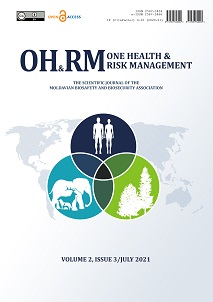Abstract
Introduction. In recent years, due to wide applications of nanotechnologies in various fields, the safety of nanomaterials has become a pressing issue. Fullerene C60 is not an exception. Research on the activity of microorganisms and their interaction with nanoparticles is of major importance, both for microorganisms and for the ecosystem as a whole.
Material and methods. Fullerene C60 powder was purchased from Sigma-Aldrich. The object of study was R. rhodochrous CNMN-Ac-05 strain. The number of viable bacterial cells was estimated by colony-forming units (CFU). The morphological features of the rhodococci colonies have been described according to the usual microbiological method.
Results. It was established that fullerene C60 in concentrations of 1-25 mg/L fullerene C60 stimulated the growth of R. rhodochrous by 2.4-2.8 times. As the concentration of fullerene C60 increased up to 50-100 mg/L, the multiplication and growth of rhodococci decreased by 29.5% and 38% respectively. In the presence of 1-10 mg/L fullerene C60 the rhodococci population remained homogeneous, being composed of 100% S type colonies. The increase of fullerene C60 concentration led both to the decrease in the CFU number and to the appearance of R type colonies, up to 1.3% of population.
Conclusions. Fullerene C60 in concentrations 1-100 mg/L had no obvious toxic effect on the rhodococci strain. The optimum concentration is 10 mg/L. The concentrations higher than 25 mg/L led to the dissociation of rhodococcal population and diminution in the CFU counts, but not to the total inhibition.
|
 Views: 416|
|
Views: 416|
|
